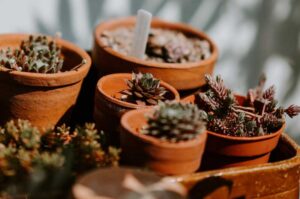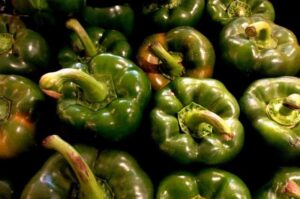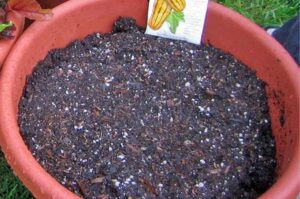Why is My Coleus Losing its Color? (Solutions Explained)
Coleus is a beautiful foliage plant that displays a wide array of colors brightening any garden. The native habitat of these beauties is the borderline of the equator but can grow in any garden as a perennial with low maintenance.

But don’t let that fool you, when not taken the minimal care, they will, like any other house plants, show signs of distress. And the fading color is one of them. In this article we are going to discuss the issue, Why is your Coleus losing color. Here we go.
The most common reason for which a Coleus loses its color is overexposure to sunlight. Even though these plants can grow in sunlight, more often their leaves turn yellow and wilt due to overexposure. Other reasons for such a situation can be due to improper watering habits, temperature stress, and overfeeding. Using potting soil without essential nutrients in them can also cause the plant to lose its color.
But don’t worry, you are in the right place if this is the issue with your Coleus, so read through this article for a detailed discussion on reasons and solutions that’ll help your Coleus regain the bright color in its leaves.
Why is My Coleus Losing its Color?
Here are a few reasons for which your Coleus might lose its color. These points will help you to find a better-growing condition for your Coleus plant. Providing them an ideal condition will prevent fading of these beauties and regain their original color.

Overexposure to sunlight
Keeping a Coleus plant in the sun assuming they require so because they are somewhat tropical, is asking for danger. This is because along with light the sun also provides heat, and this can harm the plants.
Leaving them in the sun will increase the risk of them getting sunburned followed by the fading of color and wilting of the leaves. Most of the time the leaves will turn yellow and droop. So, it is advised to not keep your plant 24/7 in the sun and heat.
Solutions
Coleus needs proper lighting conditions, but this doesn’t mean that you’ll leave them in the sun all day, neither does it mean that they prefer being in shade. What they need is enough indirect bright light to grow to their full potential.
- Keep the plants away from direct sun. If you are placing them on a window sill make sure that’s the northern window. Placing them directly under the sun will have a different result than keeping them a few inches away from the window. The ones that are kept few inches away from the window will show the expected color completely.
- Put a sheer piece of cloth in between the windowpane and the window sill to stop the direct heat from the sun while providing ample light for the plant to show its colors.
- Do not keep the plants completely in shady areas if grown indoors. This will create green and yellow patches on the colorful leaves, and also the colors will not be vibrant enough. And if that is not your thing you’ll be better off with placing them under ample light.
- If you are growing your coleus outdoor then you should place them under a shade.
- Use artificial lights for the indoor plants in winter.
One exception to this is if you have a variety that has very dark foliage. Only such varieties can tolerate direct sunlight. Other than that you should follow the above steps if this is where you are going wrong, and your plants will surely start showing colors again.
You may also like this article – Is my plant getting too much light? Can too much light kill a plant?
Underwatering
Underwatering is a common issue among houseplants. Though Coleus are among the tough ones that can tolerate fluctuations, they fall prey to underwatering too. This is because Coleus plants have thin roots that dry out fast. Therefore dry soil is a bane for these plants.
Dry soil makes these plants dehydrated and the leaves, along with losing color, start wilting. Thus if your plants are wilting their leaves, it is a sign of underwatering.
Another scenario related to fading colors due to underwatering is when you grow the plant cuttings in dry soil instead of moist soil. This results in the plant not being able to fully show its color.
Solutions to Underwatering.
Underwatering is an issue that can be solved with relative ease. Keep in mind that these plants require moist soil to keep their roots and consequently the plant hydrated.
- Water when the soil gets dry. You can understand if the soil surrounding the plant is lacking moisture by trying to push one finger into it. If you cannot push the tip of your finger even 1 inch down, then the soil is dry, and it is time to water.
- Keep the pot away from the direct sun. This will prevent the soil from drying out by losing moisture due to the sun’s heat and direct light.
- Make sure the potting soil you are using can hold water. Otherwise, change your potting soil and get one, which can hold water for a longer period of time.
Overwatering
If underwatering dehydrates Coleus, overwatering, will quietly drown the roots. Being thin, these roots are more susceptible to root rot.
Root rot is caused when the soil around the plants gets waterlogged or soggy. The water blocks out the air spaces in the soil and thus stops the aeration of the roots. This can also cause infection of the roots and fungal growth.
Overwatering can happen if you keep watering the plants even when they don’t need it. It can also occur due to regular watering even when the plants are indoors.
This is another reason your plants might be losing their colors.
Overwatering Remedies
Coleus plants require moist soil that keeps their roots hydrated all day long. Even plant cuttings should be placed in moist soil.
- Check the soil before watering. If you are able to push your fingers in around 1-2 inches, then the soil is moist, and there is no need of watering.
- If the soil is feeling hard and dry to your hand, then go for watering.
- If the plants are planted outside, water the plants every day once or twice. Watering once in two to three days is usually recommended, if the plant is in indoors.
- Stop watering if the soil is wet and let it dry before watering again.
- Choose a pot with proper drainage holes. It can easily remove the extra water, and prevent the potting soil from overwatering.
- You can add some perlite or pumice or some sand to increase the drainage capacity of the potting soil.
Temperature Stress
Coleus plants crave temperatures around 60 to 75 degrees Fahrenheit. These temperatures should be provided to them indoors for the best results. Letting the temperature fall below 50 degrees Fahrenheit is not recommended.
In the winter seasons try to grow them indoors as the outside soil usually has cooler temperatures below 50F and this, as mentioned, can harm the plant.
Therefore, if you are going to plant them outdoors, it is advised to do so during the spring when the soil temperature is well above 55F.
Lack of Proper Potting soil
Another more subtle reason for your Coleus to lose its colors is the use of improper potting soil. Soil that cannot hold moisture or is not well-drained should not be used to grow such plants.
Coleus should be grown in a soil that can retain moisture and is well-drained.
- Add mulch to the surrounding soil to increase the soil’s moisture-retaining capacity.
- Use potting soil that is specifically made for Coleus rather than use your homemade potting soil.
Potting soil plays an important role in the overall growth of the plant too. So having good potting soil will also ensure that your Coleus is showing its true colors.
Along with potting soil make sure the roots are intact. If the roots are getting overcrowded you should transplant your plants to another larger pot.
Fertilizers
Fertilizers are essential for the growth of plants in general. But overfeeding is harmful for your plant.
Overfeeding, as is evident by the name itself is caused when fertilizers are used in amounts that are not required by the plants. The leftover fertilizers appear as white salts on the soil surface and inhibit the ability of the plant to take up water.
Therefore overfeeding can also be a cause of fading colors in a Coleus plant.
You may also like- How to make homemade fertilizers for indoor plants
Solution
Ideally, it is advised to use balanced all-purpose fertilizers during the summer months in the case of Coleus. The fertilizer should be diluted in water to half its strength and then applied.
Slow releasing pellets are another popular option that can be used to fertilize these beauties.
Final Thoughts
You should be able to revive the colors of any coleus plants if you follow the methods stated above. Coleus in general can fight back on their own too if provided a bit of help.
Trim off those leaves which have lost their colors or turned yellow. New leaves will appear through this process.
Pruning also keeps the amount of foliage in check and keeps the competition low for food and light. This makes the coleus look more bushy and beautiful.
If you think that a plant is beyond recovery you can cut off a node with few leaves and pot it in moist soil and grow a new plant.
So there you go, some simple steps to rejuvenate the faded colors of your beloved Coleus plants.






